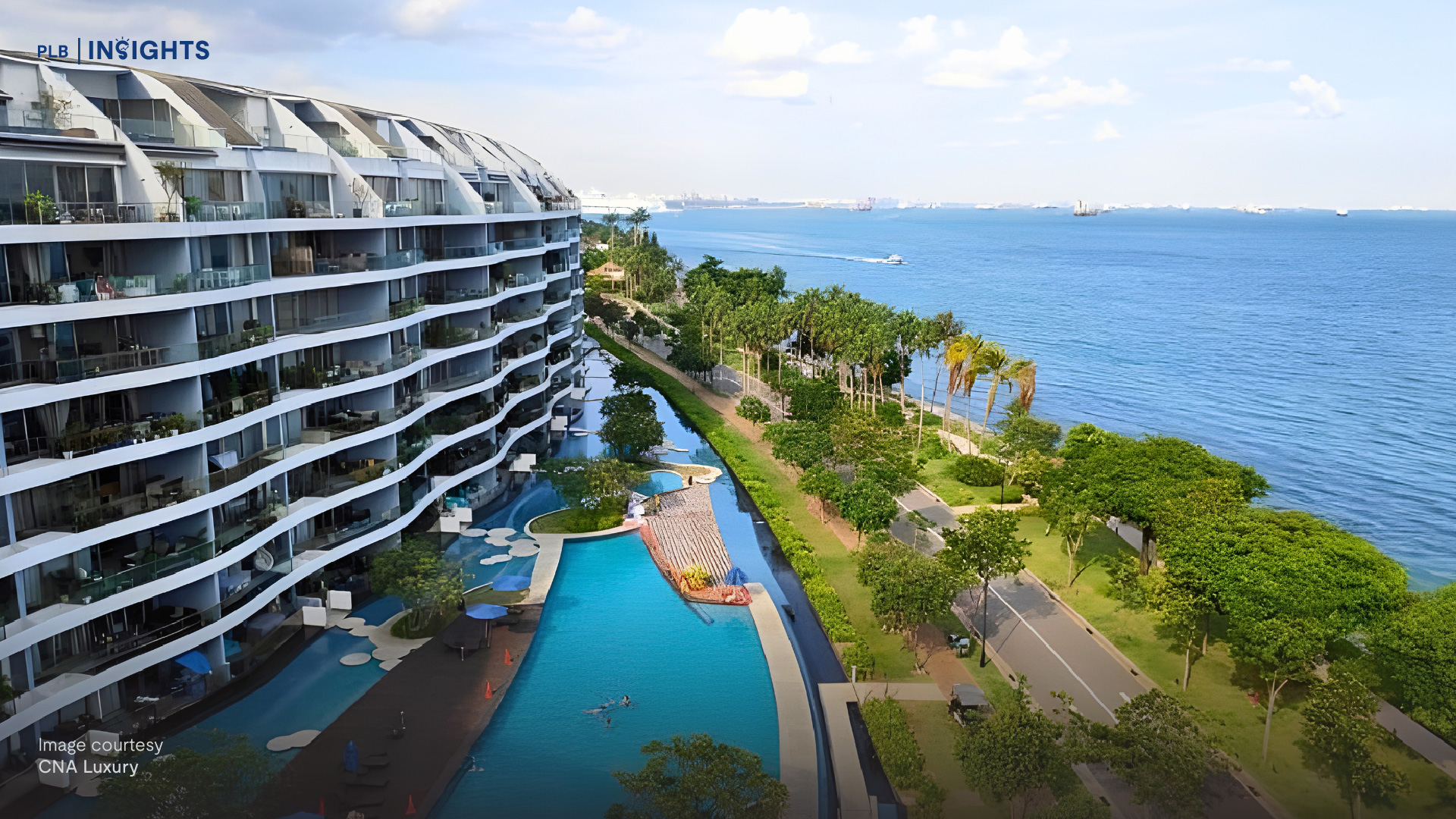
MOAT Analysis —Parents’ Attraction Effect
The old adage in the property world still stands today. Location, location, location. At first glance, it is spewing the obvious. Of course, location is important. This phrase is most cryptic to those who are new to the real estate industry. What is it exactly about the location that we need to look out for? Location is an oversimplified term in real estate to refer to many important aspects of the property. Amenities, accessibility, neighbourhood.
Is location really all that matters? Everything matters. Everything about the location, that is. To add a bit more complexity to the issue of location. Different aspects of the location matter to different people. Depending on your lifestage and the reason for buying the property, different factors will be more important to you.
Our previous articles have covered how our MOAT Analysis can help you quickly highlight the aspects of lease, value, volume, and MRT distance. With an introductory article here to guide you through all the factors we have so far on the MOAT Analysis. We aim to constantly improve our MOAT Analysis so you might see new factors being added, removed, or tweaked over time. The chief goal of the MOAT Analysis is to give our clients rich insight by comparing multiple properties on multiple different factors, all in a glance.
In this article, we focus on the Parents’ Attraction Effect. We will cover what it means, why it matters, and how we can use it in the MOAT Analysis. So buckle up and enjoy the ride.
What is the Parents’ Attraction Effect?

Image courtesy TODAY
The Parents’ Attraction Effect in the MOAT Analysis basically covers the number of primary schools available within a 1km radius of the property being analysed. This aspect is designed for parents of young children or couples planning to have children. This answers the question we posed earlier. What aspect of location matters to whom? We are looking at primary schools near the property because that will matter to parents who intend to send their children into specific schools in Singapore.
It is not a surprise that most parents would do their utmost to provide the best possible education opportunities for their children. Part of this involves picking a location that will either help them enrol into the desired school, or at least live within walking distance of the school itself. This is probably an understated quality of life improvement for the youngling.
We specifically look at primary schools rather than secondary onwards because this has to do with the admission priority of primary school students. Primary school education is compulsory in Singapore for children after turning six years of age. The balloting preference for primary schools is applicable if your child is a Singaporean citizen and lives within 1km of the school. For parents who are planning to have children and are new to this process, you might want to consider exploring the MOE website for more information.
While we believe that all schools are good schools, some are just more popular than others. If parents are looking forward to their children joining their alma mater or a popular primary school, it is not out of the question to move to somewhere nearby. Not only for the admission priority, but for the entire 6 years of education. This is a huge investment in the child’s life and also one with a long horizon. Looking forwards, 6 years is a good timeline to work with to see some capital appreciation in the property as well. In some sense, growing your property value and investing in your child’s education is aligned with an investment in a property with primary schools nearby.
Why does Parents’ Attraction Effect Matter?
The Parents’ Attraction Effect is built upon the phenomenon of parents moving to a new place (typically Condo or Resale HDB) for their children’s primary school admission and education. Why should this matter in determining how attractive a Condo is and how well it performs on price?
Approximately three quarters of Condo owners are Singaporean Citizens and around half of the Condo owners have also upgraded from a HDB. Given the demographics of Condo owners, it is likely that a decent number of future buyers will consider distance to primary schools if their reason to move is motivated by their children’s education.
This does not concern parents alone. Investors should also pay attention to this key variable. This is very important as it can provide a unique selling point when the investor eventually decides to exit the property. Even from a rental perspective, a property with primary schools nearby might attract family tenants who are looking for housing options nearby.
Because 1km is a very short radius, the number of housing options near popular primary schools are extremely limited. This scarcity drives families who are seeking admittance to certain schools to seek rental options if there are no favourable options available for purchase. Clearly, some parents who are more affluent and concerned with primary school selection might invest more capital into securing a higher chance to get into a school of their choice.

Image courtesy Sembawang Primary School
That being said, the primary school admittance exercise is also time sensitive. If parents are unable to get a good purchasing option in time, rental becomes a feasible option in order to meet their objectives. This means that investors should pay keen attention to this, even if they are looking for rental yield in the meantime.
An assumption all this is built on is that the primary school does not change locations. This is a rare and also unpredictable event in some sense. Plans to move will be announced early but often only a few years in advance. So this is something to look out for if primary school education is the main motivating factor for the property decision. With the further assumption that the popularity of schools remains unchanged, more popular schools will always have a pool of parents that would look for properties within the 1km vicinity of the school. This creates a stable pool of future buyers and reduces the risk of a difficult exit.
Additionally, if the family is planning to have more children in the future and send them to the same primary school, the benefits can be reaped for more than one child. This would make the investment much more efficient and enticing to families. Current and future parents who are convinced of this value proposition, would be able to enjoy the property investment for close to a decade and still enjoy capital appreciation.
How to use Parents’ Attraction Effect in the MOAT Analysis
Parents’ Attraction Effect can be considered a standalone factor in some sense, especially for buyers who have primary school education as their main motivation for the property investment. Otherwise, it will likely work in conjunction with other factors from an investment perspective. Since it is a factor that contributes to property demand, value, and exit opportunities, it is worth paying attention to the distance from primary schools.

In this example, we consider three different condos for the purposes of comparison. First, we look at La Casa. It is a 99-year leasehold Executive Condo completed in 2008. Its lease started in 2004. It has a total of 444 units. While it has a small number of units, most of them gravitate towards larger sizes. More than three quarters of the units are larger than 1,100 sqft. Putting them in the 4-Bedroom size and above.
This is understandable from a family planning perspective. The sandwich generation which takes care of elderly parents and young children would need the space to live comfortably. ECs arguably caters to this while providing an affordable mid-range option. The family orientation suits the heartland location as well. La Casa is found in District 25, Woodlands.
From the image below, we give La Casa 5 points on the Parents’ Attraction component. It has 4 primary schools and 4 secondary schools within a 1km radius. This gives La Casa a Parents Attraction score of 5. For La Casa, its high Parents Attraction score is accompanied by Rental Demand, Quantum Effect, and Exit Audience. Its features compliment each other to provide a decent value proposition to future buyers from the young family/couple demographic.

Next, we look at a property that scores slightly lower on the Parents Attraction component (map below). Orchid Park Condominium is a 99-year leasehold Condominium starting its lease in 1991. It was completed in 1994 with a total of 615 units. This medium sized development has almost two-thirds of its units sized 1,100 sqft and above.
This other condominium in the northern corridor is located in District 27, Yishun. The OCR condo has two primary schools and three secondary schools within its reach. And reaches a Parents Attraction score of 3. While this condominium is on the mature spectrum, it also does similarly well on Rental Demand, Quantum Effect, and Exit Audience compared to La Casa.


The last condo we are comparing with is Blue Horizon, a 99-year leasehold condominium starting from 2000. It was completed in 2005 with 616 units in total. Slightly more than two-thirds of its units are sized 1,100 sqft and above. It is located in District 5, Clementi. A (metaphorical) stone throw away from West Coast Park, this condo offers access to nature.
More importantly, it has NUS, a Japanese high school, and a secondary school within 1km of the condominium complex. We see how this condo as compared to the other two serves a different target segment. Although it does not do as well on the Parents Attraction component (score of 1), it still does excellent in Rental Demand, Quantum Effect, and Exit Audience.
It quite clearly caters to NUS students be it foreign or local, looking for rental or purchasing options. This could be attractive even to investors as it offers a stable pool of tenants due to the attractive distance to the university. It can also be targeting Japanese expatriates who wish to send their children to the Japanese high school.


This comparison for the Parents’ Attraction Effect is rather simple. The focus is on parents of children soon to enter primary school (or soon-to-be parents). A good amount of forward planning is advised if a property move is being made predominantly on this premise. This makes the component relevant even to investors as it develops a pool of special buyers for the property as well. For properties that score low on the Parents Attraction Effect, do not dismiss the property just yet. Our tool will help to highlight other secondary schools within the vicinity of the property which might be of interest as well.
Closing Thoughts
The Parents’ Attraction Effect is quite a unique trait that we track in the MOAT Analysis. It provides key information for a specific category of buyers, young (or soon-to-be) parents. This factor can be used as a stand alone, but as demonstrated, should not be the only factor you are looking at. Even if the primary focus of your property search is motivated by the availability of nearby primary schools, the MOAT Analysis reminds you to look out for other relevant factors that will affect the value of your property and the ease of exit down the road.
If you are interested to find out more about how this can help you with your property journey, reach out to our team of experts who are happy to help guide you through the process. Everyone on the Inside Sales Team is trained to use the MOAT Analysis to help focus your search and meet your priorities for your next property move.









